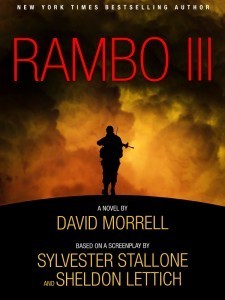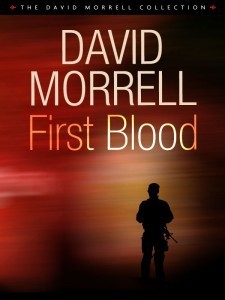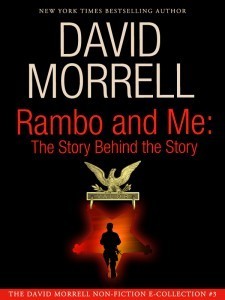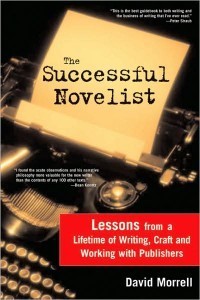David Morrell's Blog, page 2
June 30, 2012
I attended an interrogation course.
A few weeks ago, for research, I attended a law-enforcement course about interviews and interrogations. Several people asked me what happened there.
“Interrogation” has violent connotations. We think of people being beaten with rubber hoses etc. in scenes from old gangster films. Or else we think of the water boarding and sensory-deprivation techniques that I describe in my espionage story, “The Interrogator” (available as an e-story with a detailed introduction about my spy training).
But not in American law enforcement. An “interview” is a conversation with someone (a witness, for example) who has information that a police officer needs whereas an “interrogation” is a heightened, persistent conversation with a suspect for the purpose of obtaining a confession.
The idea is to appear to be sympathetic and “to sell that person a prison sentence” our FBI instructor explained. “The best interrogations end when the suspect hugs you out of gratitude because you persuaded the suspect to confess.”
How do you accomplish that? With rapport. When I was a student at the G. Gordon Liddy Academy of Corporate Security years ago, I first learned about neuro-linguistic programming and became fascinated enough that I took an NLP course and became a certified practitioner.
In simple terms, it works like this. People tend to be sight, sound, or touch oriented. Sight-oriented people say things like “I see what you’re getting at.” They look up when they’re remembering something or generating a thought.
Sound-oriented people say things like “I hear you.” They look to the side in the general direction of one ear or another when they’re remembering something or generating a thought.
Touch-oriented people say things like “I don’t feel comfortable with what you’re saying.” They look down toward the floor when they’re remembering something or generating a thought.
People who understand NLP can identify the type of person they’re dealing with and match their vocabulary and body movements in what’s called “mirroring” in order to establish rapport. Think of it in the reverse. If someone keeps using metaphors of sight such as “I don’t see what you’re getting at,” how much rapport will you establish if you reply, “Don’t you hear what I’m saying?” The disjunct is considerable. (Some marriages have been saved by NLP counseling, helping sight-oriented people learn how to get along with sound-oriented spouses. These marriages are literally mixed metaphors.)
The CIA teaches many of its field operatives about NLP because the skill is useful in recruiting and debriefing. Also, a careful observer can even determine whether people are lying on the basis of which way they move their eyes, left or right. Fascinating stuff.
Next time you’re with caring spouses or two good friends, watch the way they unconsciously mirror each other’s movements. One friend crosses her arms. A few seconds later, her friend does the same. Two people are in chairs across from each other. One crosses his legs. Soon the other does. Friends and lovers match each other. A skilled interrogator will study a suspect and begin to mirror that person. Done properly, the suspect doesn’t realize what’s happening, but the effect is to make the suspect feel that he’s been on good terms with the interrogator for a long time. “Do you see what I’m saying?” the suspect asks. “I get the picture,” the interrogator responds, supplying a sight metaphor in response. In a way, it’s like hypnotizing a suspect into confessing.
For several days, this is the sort of material that the instructor explained. I enjoy doing research of this sort and believe readers feel the authenticity when I put details like this in my fiction (again, my e-story ″The Interrogator″ is a good example).
There was one element of violence, however. The instructor showed us a videotape, with the caution that it’s important to be prepared for an interview/interrogation. In the case of the tape we were shown, the officers were far from prepared. They brought in a suspect, put him on a chair in an interview room, and went to get him a bottle of water. Alone, he pulled a pistol from beneath his shirt and blew his brains out.
On camera. Seriously. The officers hadn’t searched him before starting the interrogation. Blood flew out of his mouth. One of his eyes popped out. He slumped. After about fifteen seconds, the gun fell out of his hand. His head sagged. But he remained sitting in the chair. No flying across the room. It ain’t like in the movies. And in this case, it was a reminder that in law enforcement, every conversation, interview, or interrogation has the potential to be deadly.
CLICK HERE FOR MORE INFORMATION
June 8, 2012
My letter to beginning authors
Recently I participated in an on-line tutorial with this year’s authors in the International Thriller Writers debut authors’ program. Afterward, I wrote a letter to each of them. I thought that some of you might be interested in what I said.
Dear Fellow ITW Authors—
I’m amazed by how far International Thriller Writers has come since Gayle Lynds and I co-founded it (with a lot of help from others) in 2004 at Bouchercon in Toronto. At that time, there were 84 members. Now we have thousands.
Our goal is for everyone to help everyone else, whether the authors are veterans or beginners. ThrillerFest—and especially the CraftFest part of it —is one major way we accomplish that goal. Another way is the Debut Authors Program, to which I heartily welcome you.
When I was 17, I made the decision to become an author. I never looked back. In my fifth decade as a published author (an eternity in the writing world), I have a few mantras that worked for me. I discussed some of them recently in my Internet chat with many of you. Here they are again. They deserve to be repeated and thought about.
Be a first-rate version of yourself and not a second-rate version of another author.
Don’t chase the market.
Let the story tell you what it wants to do. Don’t get in its way.
A long career has peaks and valleys. Keep the long view.
Use your writing to make you a fuller, better person by exploring themes that matter to you, by using techniques that stimulate you, and by doing research that excites you.
On my website, you’ll find a WRITING page that has several free essays. Among them are FIVE RULES FOR WRITING THRILLERS, FIVE FURTHER CONCEPTS, and CHOOSING NAMES. The first chapter of my writing book THE SUCCESSFUL NOVELIST is also available there.
I salute you at the beginning of your careers. What we do is not for the faint of heart, but having lived this way for two-thirds of a lifetime, I still wouldn’t have chosen another path.
May 29, 2012
My Rambo novelizations are now e-books.
For me, the month of May has always been associated with Rambo. My first novel, First Blood, which introduced the character, was published forty years ago in May of 1972. The film sequels, Rambo (FirstBlood Part II) and Rambo III, were also released in May, on Memorial Day weekend of 1985 and 1988.
I wrote novelizations for the second and third films. Continuing the tradition, I’m celebrating my four decades as a published author by releasing those novelizations as e-books on Memorial Day weekend.
In many respects, the plots of the books differ so considerably from the films that I think of the books as the stories that the films might have had. Rambo’s character is extended and deepened far beyond anything in the films, surprisingly so.
I spent considerable time revising the texts and writing in-depth introductions about the fascinating background of these books, which have been unavailable for twenty years. Here are the brand-new covers, as well as the covers for First Blood and my e-essay, ″Rambo and Me: The Story behind the Story,″ which describes how Audie Murphy (America’s most decorated soldier of WWII) was the model for the character.
For purchase information, please click on the titles.
Rambo (First Blood Part II) Rambo III Rambo and Me: The Story Behind the Stories First Blood




May 27, 2012
Welcome to My New Site
Welcome to my new website. A couple of months ago, I visited my author friend Steve Berry and his wonderful wife Elizabeth in their St. Augustine, Florida, home. (Steve’s new book The Columbus Affair will be available very soon.) We got to talking about websites. Steve showed me his recent one. We compared it to the previous version of my website, which was ten years old. It didn’t take long for me to realize, with Steve’s kind urging, that it was time for me to have an update, and I hope you agree that the result is splendid.
The idea is to provide the feel of a magazine and to show you as many facets of my interests and my career as possible. In the process, I went through old photograph albums and was thrilled to find images I didn’t remember, such as the one with me rappelling off a Wyoming cliff while I was doing research for one of my novels, Testament, with the National Outdoor Leadership School.
A lot of new things have been added: pages for Rambo, writing advice, interviews I’ve given, and so on. For each of these, I include all kinds of information and links to where you can find additional information. For example, I wouldn’t have become a writer if not for Stirling Silliphant’s scripts for the classic TV series, Route 66. In this new website, I now have the room to include information about the series and my debt to Stirling, with whom I eventually worked when he was the executive producer of the NBC miniseries adapted from my novel, The Brotherhood of the Rose.
My new website makes me think about how much technology and publishing have changed in recent years. E-books have become a major part of reading, to the extent that there are about 100 million e-reading devices (iPads, Kindles, Nooks, Kobos, etc.) in the United States alone. In a few years, more than fifty percent of book sales will be in an e-book format.
From time to time, I’ll offer my thoughts about these changes. For starters, let me say that e-books provide a big benefit when it comes to an author’s backlist. This is my fortieth year as a published author (my debut novel First Blood, which introduced the character of Rambo, appeared in 1972). Publishers tend to be interested in what’s new and often are reluctant to reprint older titles, which means that over the years, various of my books have gone in and out of print. But with e-books, my out-of-print novels are now permanently available for e-readers.
Similarly, over 40 years I wrote many short stories and essays. The anthologies and magazines in which they appeared are often difficult to find, but with e-books, they are readily available. With that in mind, I created The David Morrell Short Fiction E-Collection and The David Morrell Non-Fiction E-Collection. I’m especially pleased to make the essays available: in-depth revelations about popular icons such as John Wayne and Marilyn Monroe, analyzing the significance of their careers. You’ll learn as much from these long essays as you would from reading several books about these fascinating, troubled figures.





